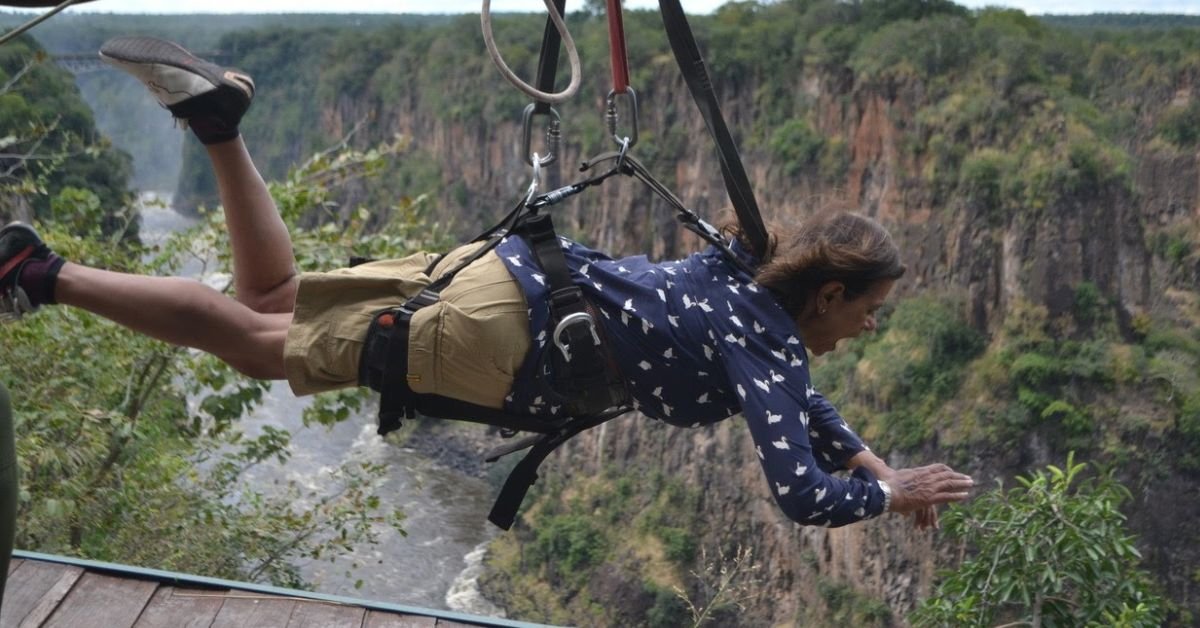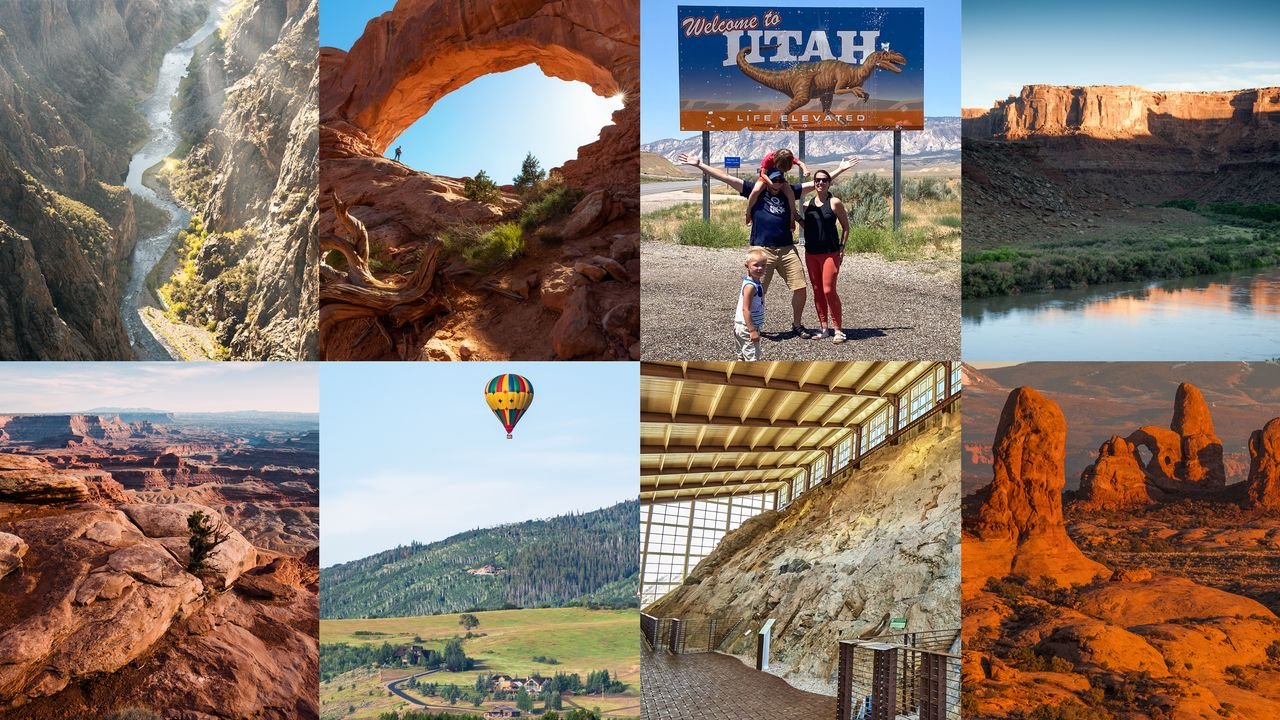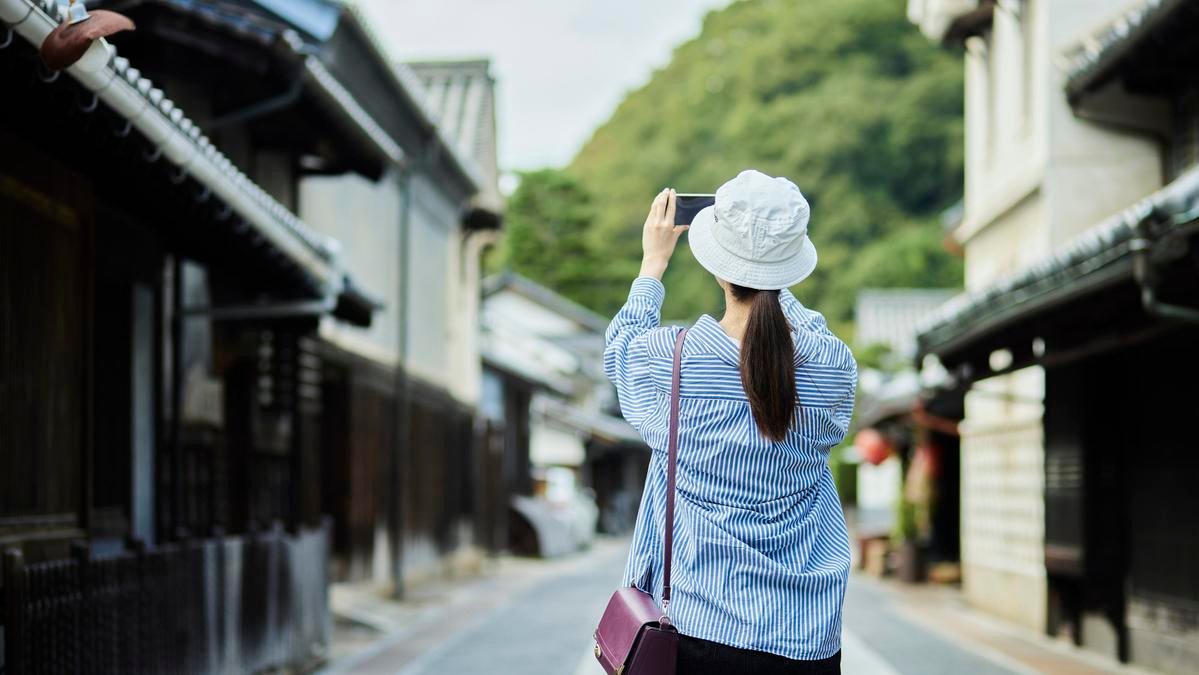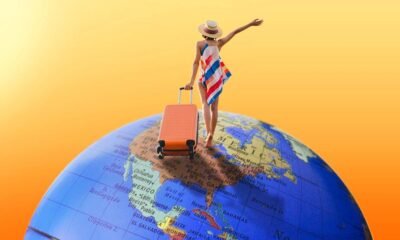Solo Travellers
6 Things to Know if You’re Considering a Solo Trip

When was the last time you did something for the first time? This year, maybe go ahead and say ‘yes’ to that solo trip you’ve been relegating to the distant future. The first time can be daunting. But our time-tested travellers promise it gets better. Their suggestion: make solo travel a habit.
1. Just do it
Life happens outside your comfort zone, believes Jaipur-based Neeru Saluja (71). This advice has stood her in good stead during the last 14 years that she’s spent globetrotting from the Galapagos Islands to the Atlantic. “My husband and I always loved to travel,” Neeru explains, momentarily reliving their many rendezvous on the Vespa scooter, having breakfast in one city, lunch in another, and dinner in a third.
After her husband passed away in 2010, travel took a backseat for Neeru. But instead of being wistful about the past, she decided to reclaim her adventurous side and booked herself a solo trip — a Christmas cruise through Europe in 2014. Since then, there has been no looking back.
Advertisement
2. Help will arrive when you need it
Despite all the meticulous planning, there is bound to be a sticky moment or two during your solo expedition. This is what the years — and 50 solo adventures — have taught Chandigarh-based lawyer Shvangi Sharma (34).
When Shvangi was travelling from Kerala to Tamil Nadu by road in 2016, she recalls having forgotten the RTO permit. Years later, her takeaway from the incident isn’t the mistake, but the kindness of a police officer who stepped in to help. “When I told him about my permit issue, he called someone from the RTO on the way and got me a permit without having to visit the office. That incident fuelled my confidence for the rest of the trip,” she says.
Another solo travel aficionado, Vimal Geethanandan (30) from Andhra Pradesh, underscores the same lesson. Though Vimal has been backpacking since 2016, it hasn’t always been a breeze. Take, for instance, that time in 2021 when he contracted COVID-19 while on the road. “I was in a forest area and did not have the energy to cook for myself,” he shares. But, he adds, “The Universe is always looking out for you.” He explains how a social media follower played good Samaritan, got him medical help, and even arranged his stay at a local temple.
3. Experiment and let yourself be surprised
Snails aren’t Neeru’s favourite starter. But when in Nagaland, she went all in. This was her way of embracing the local culture. “We had snails that were brewed with herbs and served with rice beer. It is custom for the local communities to keep refilling the glasses before they run dry, and so we ate and drank for hours before we couldn’t possibly eat any more,” she explains. Travel introduces you to foods that might evade desi perception. Don’t shy away from trying them, she urges. Shed your inhibitions, she adds.
Experimenting isn’t always limited to gastronomy, we learn by watching Shvangi’s expeditions, which are almost always offbeat. They include visits to Kerala’s Kodinhi village, which is known for its unusual number of twin births, and Thrissur’s Marottichal village, which sings praises of the tea seller who reduced alcohol consumption through chess boards.
4. The rough times? They’re part of the ride
Consider setbacks a rite of passage during a solo trip. Not all of Vimal’s travels have been coloured with sunsets. He shares about days when, while caravanning, the water supply would run out as would the power, and he would be looking at a night filled with mosquitoes and rats. “But, the lonely nights, the adversities are as much a part of travel as are beaches,” he says.
Advertisement
And, there is a silver lining. The more solo trips you take, the more these unstructured moments will seem fewer and farther between. You’ll learn from mistakes, make new ones, and become adept at handling any crisis.
5. In Rome, live like the Romans. But, learn from them too
The sole purpose of travel isn’t to experience the world in all its glory but to carry souvenirs back home. And no, we aren’t talking about fridge magnets. For Neeru, these souvenirs are the learnings she gains from different cultures. At the Galapagos Islands — the world’s foremost destination for wildlife viewing — Neeru marvelled at the locals’ mindfulness towards their fauna. “There is a lot of consciousness among the citizens. If you are doing anything incorrect, they are there to point it out to you.” It was the same with Antarctica. On returning from a trip, she implements these salient ideals.
6. Don’t consign your travels to luck
You don’t need to contend with exorbitant budgets while planning your solo trip. Shvangi points out a solution — volunteering.
“There are several hostels, homestays, and hotels that need volunteers to manage daily operations, host guests, or create content,” she shares. This, along with aiding your budget, will also help you get an authentic experience. “Make a brand out of yourself,” she adds, elaborating on how monetising your trips could help you fund future ones.
Edited by Khushi Arora
Solo Travellers
Renting a Camper Van for a Road Trip of Stargazing, Cook Outs, and Red Rock Hikes

For Jo Piazza and Nick Aster, a camper van trip through the national parks of Colorado and Utah wasn’t just a summer escape—it was a way to reconnect with the adventures they loved pre-kids. “It was time for a trip out west,” Jo says. “We’d visited a lot of these national parks when we lived in San Francisco, but now it was about showing our kids—Charlie, 5, and Beatrix, 3—what makes these places so special.”
The couple, who live in Philadelphia and were expecting their third child at the time (Eliza, now born), mapped out a 10-day loop that started and ended in Denver. Along the way, they visited Rocky Mountain National Park, Steamboat Springs, Dinosaur National Monument, Moab, Arches, Canyonlands, Black Canyon of the Gunnison, and Breckenridge. “It was a bit of an epic romp,” Jo laughs. Here’s how they spent their family vacation—and how much it cost.
Why rent a camper van?
Pregnant, outdoorsy, and realistic about the physical demands of camping with two small kids, Jo knew she needed more than a tent. “Sleeping on the ground just wasn’t going to cut it,” she says. “A van gave me a good place to sleep—and full disclosure, Nick often slept out in the tent with the kids to give me a bit of luxury.”
They rented their “cabin camper” through Outdoorsy—a fully tricked-out truck with a massive cap in the back that felt like a log cabin on wheels. “People commented on it everywhere we went,” Jo says. “We’d get high fives, people asking to take pictures. At one point, someone said, ‘Hey man, we saw you in Canyonlands two days ago! That thing is awesome.”
Planning a flexible route around national parks
Unlike their usual meticulously planned vacations, this one was intentionally open-ended. “We had a general loop in mind,” Jo explains. “We knew we wanted to hit Rocky Mountain right away since it’s so close to the airport, and we knew Charlie would go bananas for Dinosaur. But the rest we figured out as we went. That’s the beauty of traveling by van—you don’t need to lock in hotels every night.”
This flexibility came in handy during a July heatwave in Moab. “We broke up the camping with a stay at the super-unhip Marriott,” Jo says. “It had a fake red rock pool and a mini water park. It flew in the face of the National Park ethos, but with 100-degree heat and two little kids, we just leaned in. They loved it.”
Top highlights for parents and kids
The kids’ favorite moments weren’t always the ones Jo and Nick would’ve picked, but they rolled with it. “They’re still talking about the pool in Moab and the fossil quarry at Dinosaur National Monument,” Jo says. “Also, they were weirdly into how much attention the van got.”
Solo Travellers
A pristine alternative to the Channel: long-distance swimming in Croatia | Swimming holidays

From the port of Stari Grad, one of the oldest towns in Europe, we slip into the water and begin swimming out of the harbour, past the church of Saint Jerome and around a pine-clad headland to a nearby bay on Hvar’s northern coast. We emerge like an amphibious invasion force – about 160 swimmers, making our way to the hotel pool bar where drinks await. So far, so civilised. But this is only a warm-up …
On 24 August 1875, Captain Matthew Webb became the first person to swim the Channel, slathered in animal fat to fend off the cold. At the time, it was heralded as a feat of near-superhuman endurance. One hundred and fifty years later, I signed up for a modern take on the 33.3km (21-mile) swim (the shortest distance across the Channel, although Webb was blown off course and ended up swimming something like 63km). This Croatian adaptation involves swimming between islands off the Dalmatian coast, is split across four days and includes a welcoming hotel (the three-star Places Hvar by Valamar) to recuperate in at the end of each day. And thankfully, neoprene has replaced tallow.
The trip is run by UltraSwim 33.3, a new company named after the Channel stretch, offering multiday swim challenges in spectacular locations – Croatia, Montenegro, Greece and Switzerland – with an emphasis on comfort and support.
“The Channel is the Everest of swims,” says Mark Turner, UltraSwim 33.3’s co-founder. “But the window to do it is short, it’s expensive, and – let’s be honest – not a particularly appetising stretch of water. With us, you get the same distance in beautiful surroundings, without having to rough it.”
I’ve been on swimming holidays before with companies such as SwimTrek and Strel Swimming Adventures, and I’ve swum up to 5km a day, but with breaks for drinks, lunch and soaking up the sun. UltraSwim takes a more structured, challenge-oriented approach. Each day begins early – we are in the water by 8am, before boat traffic picks up – and swimmers go up to 12km without pausing for more than a quick pit stop.
A detailed training plan landed in my inbox after I’d signed up and I quickly realised I wasn’t fit enough, or perhaps was mentally unprepared, for the full 33.3km swim. Thankfully, there were two shorter options available: the 11.1km “Discovery” and the 22.2km “Build” packages, both nodding to the Channel challenge.
On the first day, we set off from a jetty close to the hotel and, within minutes, I spot an octopus waving lazily from its underwater garden. I’d love to linger, but time and tide wait for no swimmer. Several kilometres later, I stumble out of the water on to the beach at Uvala Veli Dolac, exhausted but elated. We are greeted by a spread of high-energy snacks and a lot of talk about carb loading – a far cry from Webb’s fuelling strategy of beer, brandy and beef tea.
According to the Channel Swimming and Piloting Federation, Webb’s swim has now been repeated 3,250 times. The endurance trend is visible in other areas, too, from ultramarathons and multiday cycling tours to open-water relays. Increasingly, it seems, people want to return from holiday not rested but with a sense of accomplishment.
On days two and three, we tackle some proper “Channel” swims across 2-3km stretches of open water, from the Kabal headland to Stiniva beach, and Cape Pelegrin to Palmižana. On the map these are marked as ferry routes, but the views I enjoyed from the deck when I arrived in Hvar – all pine-studded islands and turquoise waters – feel very different when in the water: a distant headland to aim for, choppy seas and the occasional jellyfish.
I’ve never attempted anything quite like this before, and it’s not a challenge I relish. But I put my head down and try not to think about how far I am from dry land. There’s a GPS tracker in my tow float, kayakers on either side, and a clear course to follow – thankfully more straightforward than the one Webb swam, where strong tides dragged him way off course, turning a 21-mile crossing into a 39-mile slog.
As I swim for just over two hours, I find it hard to fathom how he kept going for nearly 22. I distract myself by recalling snapshots from the trip: the 16th-century Tvrdalj Castle in Stari Grad, where the poet Petar Hektorović once lived; and the Diocletian’s Palace in Split, where I spent a relaxed day exploring its golden alleyways and multiple layers of history, from the Roman and Venetian empires to Yugoslavia and the past 30 years of an independent Croatia.
after newsletter promotion
Once we complete the open-water channels, we circle back into gentler waters around the Pakleni archipelago, covered with the pine, wild rosemary and lavender that flavours the local honey. The name “Pakleni” comes from paklina, a pine resin once used for boat building.
Our 160-strong group is made up of swimmers from across the globe, from as far and wide as Brazil, Dubai and Australia. There are almost equal numbers of men and women, with ages ranging from 20 to 73. Some are training for an actual Channel crossing, others just want a challenge.
“It’s type-two fun,” Joe from Dublin tells me. “The kind that’s only fun after it’s over.” I think I’m more of a type-one (enjoying things at the time) person, but I do enjoy swimming across the sun-dappled kelp forests, the calm rhythm of stroke after stroke, and the quiet pride of finishing each day’s swim.
“We find that people surprise themselves,” says Turner. “The way we structure it with pacing and support, swimmers who’ve never gone beyond a few kilometres leave feeling they’ve done something extraordinary.”
Non-swimming partners aren’t left out. They can follow by boat, cheer from the shore or explore Stari Grad and Hvar. One non-swimmer told me he’d racked up a fair few kilometres on an ebike, visiting lavender farms, vineyards and sleepy fishing villages. “Other than a brief dip, swimming’s not really my thing,” he shrugged. “But my girlfriend loves it, so we’re both happy.”
On the final day, we aim for the bell tower of St Stephen’s Cathedral and swim the last few kilometres into Hvar’s harbour, emerging beside the Venetian arsenal to a glass of champagne, handed to us after we pass the finishing posts, to bemused stares from regular tourists.
A few hours later, after a soothing massage in a spa hotel, I’m wandering Hvar’s labyrinthine streets, stopping to enjoy fresh fish and Croatian wine, with no more talk of carb loading. I didn’t win anything. I didn’t swim the full 33.3km. But I completed the 11.1km course and tasted something akin to what Captain Webb must have felt: the slow, steady triumph of body over distance, albeit without the freezing water of the Channel, or the beef tea. And, instead of the pale grey cliffs of Cap Gris-Nez to signal the end, the golden limestone of Hvar.
The trip was provided by UltraSwim 33.3. Packages from €1,800pp for four nights (in a group of four, the fourth swimmer goes half-price), including hotel accommodation, breakfasts, post-swim lunches and guided swims. The next Croatia dates are in 2026 but places are available this year on trips to Montenegro, Greece and Switzerland
Solo Travellers
Going solo in Japan … 7 reasons why it’s a top spot

Ohitorisama. This Japanese word means “party for one” – a celebration of being solo.
And, with the rise and rise of the solo and single traveller, the Japan National Tourism Organisation sees the synergies.
For it is perfectly acceptable – normal – to venture alone into standing sushi bars, stay in small single rooms in capsule hotels and even sing “karaoke for one”.
A JNTO spokesperson says: “The concept of spending time alone has been somewhat of a cultural evolution in Japan, spurred by younger generations and a nation with one of the world’s highest rates of single-dweller households.
“This is the ultimate destination for independent travellers keen to embrace the Japanese version of ‘me time’.
“For solo travellers ready to combine cultural immersion and superb scenery with a journey of self-discovery, personal freedom and the chance to pursue their passions, Japan ticks all the boxes.”
And the JNTO team has identified these seven reasons that Japan is ideal for solo travellers, in their own words …
It’s super safe
Japan consistently ranks among the top 10 countries in the world for safety, and with a lively entertainment scene and fantastic public transport, you won’t be alone exploring after dark or travelling by train.
Cute capsule hotels
Don’t need much space? Just somewhere clean, compact and convenient to lay your head? Then check out one of Japan’s many capsule hotels, which often also include communal spaces to connect with fellow solo travellers, speedy wi-fi, luggage storage spaces and tasty snacks. There are also female-only capsule hotels or female-only floors in both capsule and more conventional hotels for women travelling independently.
Adventures after dark
From tachinomi (standing bars) serving local beer, sake and affordable snacks, to the rise of single-person karaoke parlours such as 1Kara in response to growing demand from those who want to belt out a tune or two on their own terms in the privacy of their own booth, Japan’s nightlife offers diverse options for individual travellers. independent travellers.
Memorable meals
There’s no stigma attached to dining solo in Japan, in fact, there are style of dining specifically designed for it. From standing sushi bars, known as tachigui, where solo diners can enjoy authentic, affordable sushi to ramen restaurants where diners sit side-by-side between partitions watching the chefs in action, there’s no need to miss out on a magnificent meal if you’re travelling solo. Even yakiniku restaurants have evolved to welcome solo diners by adding personal grills at the counter to cook your own sizzling cuts, whilst conveyor belt venues make it easy to mingle with fellow diners.
Slick public transport
Japan’s train network is second to none: clean, reliable and on time, literally down to the second. You can easily navigate to the right station entrance with Google Maps and pay using your phone by downloading the Welcome Suica Mobile app (iPhone only).
Cultural experiences
From art galleries and museums to temples and creative classes in everything from calligraphy and lacquerware to silk painting and sushi-making, there are endless cultural and historic activities to enjoy as a solo traveller, and many are free.
Wellness for one
Onsen bathing is delightful as a solo activity, providing an opportunity to enjoy the serenity and focus on self-care and wellness. Most onsen offer single-sex bathing options, and some ryokan and onsen towns also allow bathers to book a kashikiri buro (private bath) for the ultimate solo soak. If you have a tattoo, no worries, there are tattoo friendly onsens too.
japan.travel/en/au/
-

 Brand Stories2 weeks ago
Brand Stories2 weeks agoBloom Hotels: A Modern Vision of Hospitality Redefining Travel
-

 Brand Stories1 week ago
Brand Stories1 week agoCheQin.ai sets a new standard for hotel booking with its AI capabilities: empowering travellers to bargain, choose the best, and book with clarity.
-

 Destinations & Things To Do2 weeks ago
Destinations & Things To Do2 weeks agoUntouched Destinations: Stunning Hidden Gems You Must Visit
-

 Destinations & Things To Do1 week ago
Destinations & Things To Do1 week agoThis Hidden Beach in India Glows at Night-But Only in One Secret Season
-

 AI in Travel2 weeks ago
AI in Travel2 weeks agoAI Travel Revolution: Must-Have Guide to the Best Experience
-

 Brand Stories4 weeks ago
Brand Stories4 weeks agoVoice AI Startup ElevenLabs Plans to Add Hubs Around the World
-

 Brand Stories3 weeks ago
Brand Stories3 weeks agoHow Elon Musk’s rogue Grok chatbot became a cautionary AI tale
-

 Asia Travel Pulse4 weeks ago
Asia Travel Pulse4 weeks agoLooking For Adventure In Asia? Here Are 7 Epic Destinations You Need To Experience At Least Once – Zee News
-

 AI in Travel4 weeks ago
AI in Travel4 weeks ago‘Will AI take my job?’ A trip to a Beijing fortune-telling bar to see what lies ahead | China
-

 Brand Stories4 weeks ago
Brand Stories4 weeks agoChatGPT — the last of the great romantics












